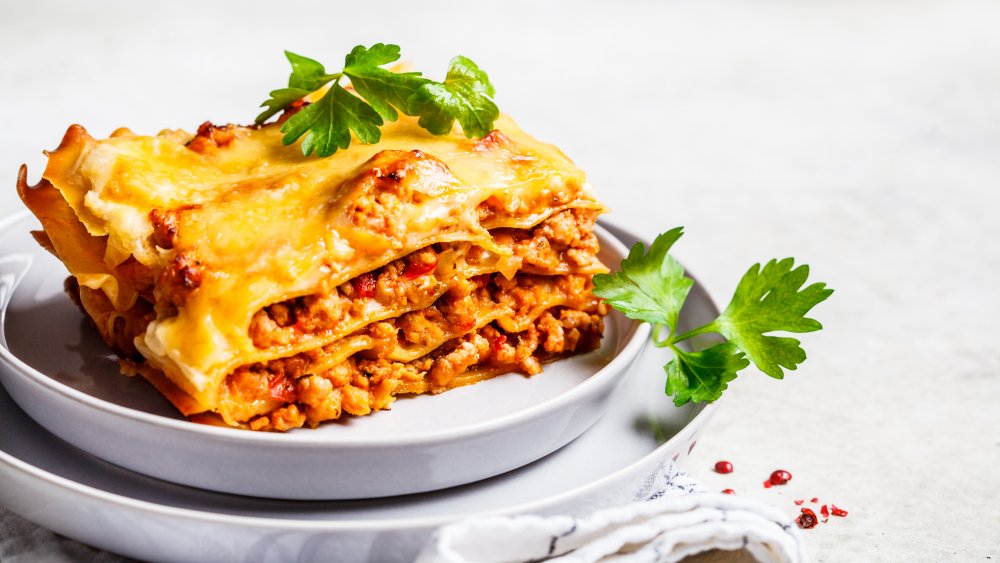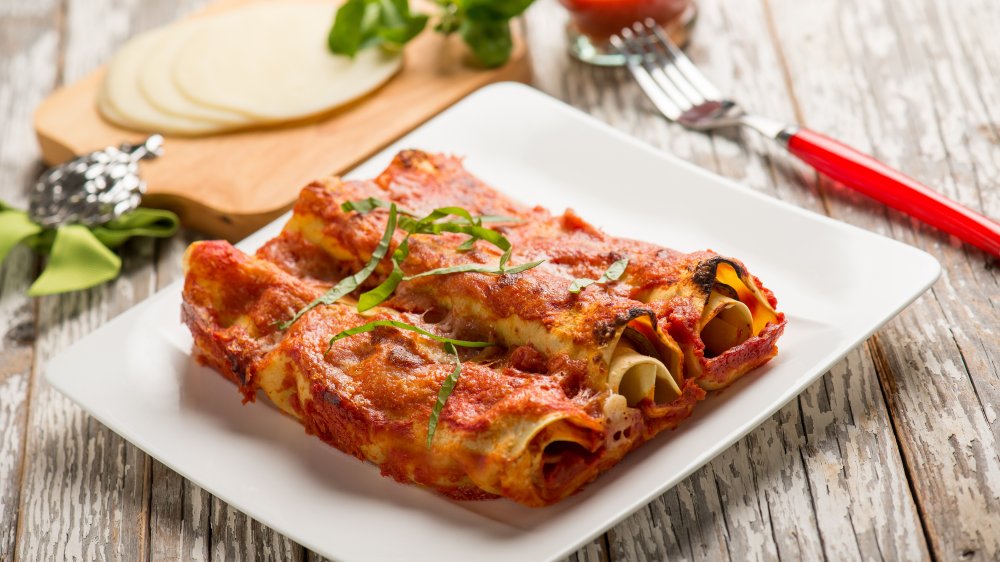Here's The Difference Between Lasagna And Cannelloni
Long story short, the difference comes down to one being a tube. For those of you that are still confused, okay, yes, there's a little more to the distinctions between these two widely adored Italian pastas. And they are, in fact, similar. Both dishes, which are made with their namesake pastas, include the holy trinity of cheese and sauce entrapped in pasta (via Taste Atlas and Kitchn). Both can incorporate meat or veggies, and derive even more luscious flavor from being baked in an oven (via Taste Atlas and Kitchn). But cannelloni are large and tube-shaped, while lasagne (singular: lasagna) are flat and wide — and one can be made into another (via Food 52 and Woman's Day).
Historically, lasagna was much different than the heavy sauce-laden affair we know and love today. It was actually around as early as the middle ages, and according to Italy Magazine, an onlooker from as early as 1284 described a friar eating, saying, "I've never seen anyone stuffing himself on lasagna with cheese so pleasurably and so fully as him." Cheers to that. But the sauce we know and love today apparently didn't touch those thin sheets of pasta until way into the 1800s. Same with the layers (via Italy Magazine).
What is cannelloni?
Cannelloni, on the other hand, has a more murky history. But some food blogs seem to agree that the stuffed and baked cylinders didn't appear until the beginning of the 20th century, when they were popular with upper-crust gourmets (via the Pasta Project). Cannelloni can also be made with lasagna that is simply rolled up into a tube after being filled with ricotta, minced meat, or spinach (via Woman's Day). To make matters even more confusing, cannelloni (meaning "large reeds") in Italy and Spain is often known as manicotti (meaning "sleeves") in the USA (via the The Spruce Eats, Duolingo and Enacademic).
Whatever the variety, cannelloni are usually stuffed with a mild cheese or other fillings and topped with a sauce before baking. Lasagna, on the other hand, is layered with sauce throughout, at least in the US (via Kitchn and Taste of Home). The sauce can be anything from a rich, meaty bolognese to a light bechamel, or a marinara. Tubes, sheets, or sheets rolled into tubes — you can't go wrong with saucy carbs and cheese baked to bubbly perfection.

